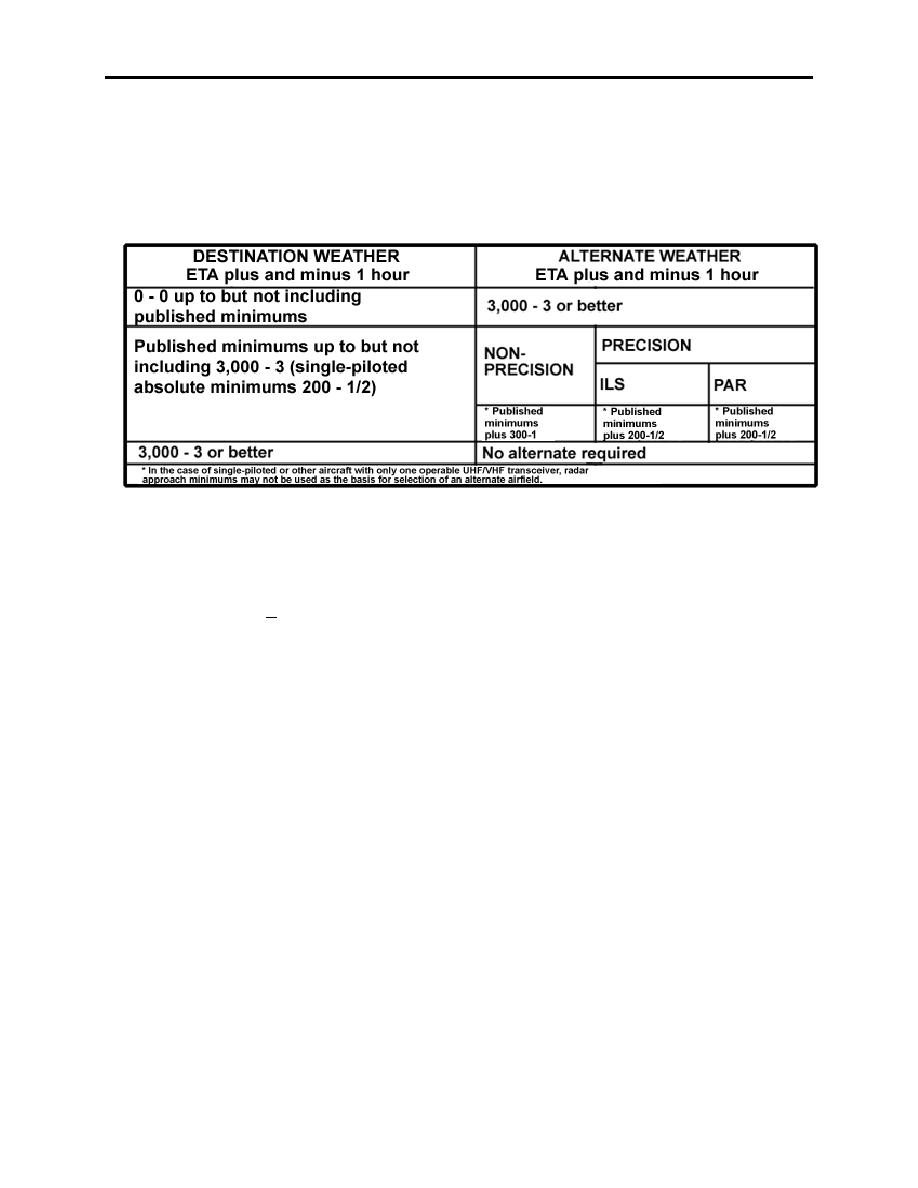 |
|||
|
|
|||
|
Page Title:
Figure 1-34. OPNAV 3710.7 Determination of Requirement for Alternate |
|
||
| ||||||||||
|
|  METEOROLOGY FLIGHT PLANNING
CHAPTER ONE
the flight planning process. In particular, when filing an IFR flight plan, an alternate landing
airfield may or may not be required to be included on the DD 175 Flight Plan.
Naturally, the OPNAV 3710.7 provides rules that determine when an alternate is required, as
pictured in Figure 1-34.
Figure 1-34 OPNAV 3710.7 Determination of Requirement for Alternate
When filing a Navy IFR flight plan, an alternate is required if the destination is forecasting a
ceiling below 3000 feet or if the visibility is less than three statute miles (referred to as 3000-3)
for the time period of +1 hour of the planned ETA. If the forecast ceiling for the destination
airfield is "below minimums," then an alternate must be selected that has VFR weather, 3000-3,
or better. However, if the destination has ceilings above the minimums but below 3000-3, then
the alternate airfield must have forecast ceiling and visibility above the minimums for the
planned approach by the appropriate margin (indicated on the right of Figure 1-34), either 300-1
for a non-precision approach, or 200-1/2 for a precision approach.
AFI 11-202 (Vol. 3) provides rules determining when an alternate is required, as pictured in
Figures 1-35 and 1-36, depending on whether flying fixed wing or rotary wing aircraft.
AVIATION ROUTINE WEATHER REPORTS AND TERMINAL AERODROME
FORECASTS 1-29
|
|
Privacy Statement - Press Release - Copyright Information. - Contact Us |